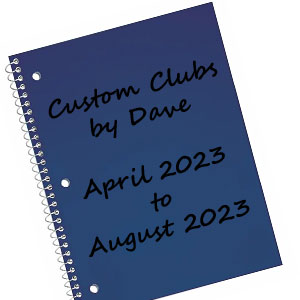
For any clubmaker, one important step is good recordkeeping. It is simple, takes little time and it should become a habit for every club you build. Why is this so important? Well, think about what would happen if your customer lost, broke, or had a golf club(s) stolen? Chances are you would have to have that customer come back or ship their clubs to you to be able to duplicate. However, if you have kept good notes, then you become the hero and can have their club ready and not have to have them inconvenienced.
What kind of information should you keep?
That is entirely up to you to how in-depth you want to keep records for you to be able to duplicate a product you previously made. Keep that information in a notebook, binder or in an Excel file. Just remember if you save anything digitally, to create a backup.
Basic Information
· Clubhead (Brand / Model / # / Loft / Hand)
· Shaft (Brand / Model / Flex / Tip Trimming)
· Grip (Brand / Model / Color / Size including Build Up Tape)
· Ferrule (Size / Color)
· Length
· Swing Weight
Advanced Information
· Uncut Shaft Weight or Frequency
· Loft and Lie (If Fitted and Adjusted)
· Any Additional Clubmaking Notes


Make sure to tell the customer you have saved their information and why. This will give them a warm and fuzzy feeling about dealing with you in the future. Heck they may want to have you build a backup set to take down south to their condo in the winter months.
Of course, as time goes by, products become discontinued. But the savvy clubmaker can always try to find the golf components that will be closest to the specs. Afterall, you kept good records!





